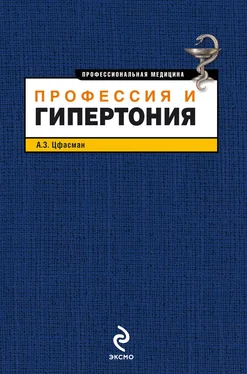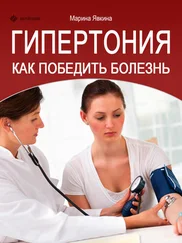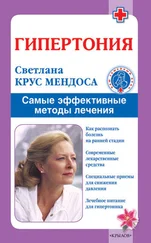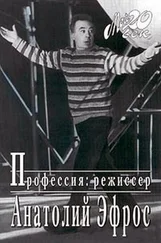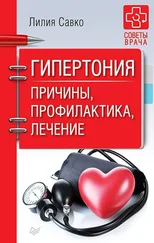Dodt C., Breckling U., Derad I. et al. Plasma Epinephrine and Norepinephrine Concentrations of Healthy Humans Associated With Nighttime Sleep and Morning Arousal. // Hypertens. – 1997. – vol. 30. – pp. 71–76.
Drager L.F., Ueno L.M., Lessa P.S. et al. Sleep-related changes in hemodynamic and autonomic regulation in human hypertension. // J Hypertens. – 2009. – vol. 27(8). – pp. 1655–1663.
Drugs. The PDR Pocket Guide 6th Edition. – New York, London, Toronto, Sydney, Singapore. – 2003.
Eastman C. Natural summer and winter sunlight exposure patterns in seasonal affective disorder. // Physiol Behav. – 1990. – vol. 48. – pp. 611–616.
Epstein F.H., Eckoff R.D. The epidemiology of high blood pressure – geographic distributions and etiological factors, in The epidemiology of hypertension. – New York – London: Grune-Stratton. – 1967. – pp. 155–166.
Esquirol Y., Bongard V., Mabile L. et al. Shift work and metabolic syndrome: respective impacts of job strain, physical activity, and dietary rhythms. // Chronobiol Int. – 2009. – vol 26(3). – pp. 544–559.
Fagard R., Staessen J.A., Thijs L. The relationships between left ventricular mass and daytime and night-time blood pressures: a mata-analysis of comparative studies. //J Hypertens. – 1995. – vol. 13(8). – pp. 823–829.
Fido A., Ghali A. Detrimental effects of variable work shifts on quality of sleep, general health and work performance. // Med Princ Pract. – 2008. – 17(6). – pp. 453–457.
Folkard S. Black times: temporal determinants of transport safety. // Accid Anal Prev. – 1997. – vol. 29. – pp. 417–430.
Folkard S. Do permanent night workers show circadian adjustment? A review based in the endogenous melatonin rhythm. // Chronobiol Int. – 2008. – vol. 25(2).-pp. 215–224.
Frank A.J., ScheerL., GertA. et al. Daily nighttime melatonin reduces blood pressure in male patients with essential hypertension. // J Hypertens. – 2004. – vol. 43. – pp. 192–197.
Frederych V. Effect of occupational physical work on blood pressure. – 1993. – vol. 44(5). – pp. 477–483.
Gibbs М., Hampton S., Morgan L., et al. Adaptation of the circadian rhythm of 6-sulpha-toxymelatonin to a shift schedule of seven night followed by seven days in offshore oil installation workers. // Neurosci Lett. – 2002. – vol. 325(2). – pp. 91–94.
Giles T.D. Circadian rhythm of blood pressure and the relation to cardiovascular events. //J Hypertens. – 2006. – vol. 24 – pp. S11-S16.
Giles T.D. Relevance of blood pressure variation in the circadian onset of cardiovascular events. //J Hypertens. – 2006. – vol. 24 – pp. S35-S39.
Gold D.R., Rogacz S., Bock N. et al. Rotating shift work, sleep, and accidents related to sleepiness in hospital nurses. // Am J Public Health. – 1992. – vol. 82. – pp. 1011–1014.
Goldstein I.B., Shapiro D., Chic-Demet A., et al. Ambulatory blood pressure, heart rate and neuroendocrine responses in women nurses during work and off work days. // Psychosomatic Med. – 1999. – vol. 61. – pp. 387–396.
Grote L., Hedner J., Peter J.H. Mean blood pressure, pulse pressure and grade of hypertension in untreated hypertensive patients with sleep-related breathing disorder. //J Hypertens. – 2001. – vol. 19. – pp. 683–690.
Grundy A., Sanchez М., Richardson H. et al. Light intensity exposure, sleep duration, physical activity, and biomarkers of melatonin among rotating shift nurses. // Chronobiol Int. – 2009. – vol. 26(7). – pp. 1443-61.
Harlan W.R. The relationship of blood lead to blood pressure in the US population. // Environ Health Perspect. – 1988. – vol. 78. – pp. 9-13.
Hedberg G.E., Wikstrom-Frisen L.,Janlert U. Comparison between two programmes for reducing the levels of risk indicators of heart diseases among male professional drivers. – 1998. – vol. 55(8). – pp. 554–561.
Hermida R.C., Ayala D.E., Smolensky M.H. et al. Chronotherapy in hypertensive patients: administration-time dependent effects of treatment on blood pressure regulation. // Expert Rev Cardiovasc Ther. – 2007. – vol. 5(3). – pp. 463-75.
Hermida R.C. Ambulatory blood pressure monitoring in the prediction of cardiovascular events and effects of chronotherapy: rationale and design of the MAPEC study. // Chronobiol Int. – 2007. – vol. 24(4) – pp. 749-75
Horowitz T.S., Cade B.E., Wolfe J.M. et al. Efficacy of bright light and sleep/ darkness scheduling in alleviating circadian maladaptation to night work. // Am J Physiol Endocrinol Metab. – 2001. – vol. 281. – pp. E384-E391.
Hoff stein V., Rubinstein I., Mateika S. et al. Determinants of blood pressure in snor-ers. // Lancet. – 1988. – vol. 2. – pp. 992–994.
Ikeda Т., Matsubara Т., Sato Y. et al Circadian blood pressure variation in diabetic patients with autonomic neuropathy //J Hypertens. – 1993. – vol. 11. – pp. 521–529.
Jean-Louis G., Kripke D.E, Elliot J.A. et al. Daily illumination exposure and melatonin: influence of ophthalmic dysfunction and sleep duration. // J Circad Rhythms. – 2005. – vol. 3. – pp. 13.
Kales S.N., Tsismenakis A.J., Zhung C. et al. Blood Pressure in Firefighters, Police Officers, and Other Emergency Responders. // Am J Hypertens. – 2009. – vol. 22(1).-pp. 11–20.
Karasek R.A. Job demands, job decision latitude and mental strain: implications for job redesign. // Administration Science Quarterly. – 1979. – vol. 24. – pp. 285–307.
Karasek R.A., Baker D., Marer F. et al. Job decision latitude, job demands and cardiovascular disease. A prospective study of Swedish men. // Am J Public Health. – 1981. – vol. 71. – pp. 694–705.
Karasek R.A., Theorell T. Healthy work Basic Books // – New York. – 1990. – p. 54.
Kaźmierczak A., Lewandowski J., Lapinski M. Czy melatonina bierze udzial w regulacji dobowego rytmu cisnienia t^tniczego krwi? // Art Hypertens. – 2006. – vol. 10(1). – pp. 69–77.
Kazuomi K., Takefumi М., Hiroko K. et al. Nocturnal Fall of Blood Pressure and Silent Cerebrovascular Damage in Elderly Hypertensive Patients // Hypertens. – 1996. – vol. 27. – pp. 130–135.
Kitamura Т., Onishi K., Dohi K. et al. Circadian rhythm of blood pressure is transformed from a dipper to a non-dipper pattern in shift workers with hypertension. //J Hum Hypertens. – 2002. – vol. 16. – pp. 193–197.
Klein Т., Martens H., Dijk D.J. et al. Circadian sleep regulation in the absence of light perception: chronic non-24-hour circadian rhythm sleep disorder in a blind man with a regular 24-hour sleep-wake schedule. // Sleep. – 1993. – vol. 16. – pp. 333–343.
Klerman E.B., Shanahan T.L., Brotman D.J. et al. Photic resetting of the human circadian pacemaker in the absence of conscious vision. // J Biol Rhythms. – 2002. – vol. 17. – pp. 548–555.
Kripke D.F., Jean-Louis G., Elliot J.A. et al. Ethnicity, sleep, mood, and illumination in postmenopausal women. // BMC Psychiatry. – 2004. – vol. 4. – pp. 8–9.
Kurpesa М., Trzos E., Drozdz J. et al. Myocardial ischemia and autonomic activity in dippers and non-dippers with coronary artery disease: assessment of normotensive and hypertensive patients // Int J Cardiol. – 2002. – vol. 83(2). – pp. 133–142.
Lavie P., HererP., Hoff stein V. Obstructive sleep apnoea syndrome as a risk factor for hypertension: population study. // British Med J. – 2000. – vol. 320(7233). – pp. 479-82.
Читать дальше
Конец ознакомительного отрывка
Купить книгу
